CHEMICAL IDENTIFICATION
-
RTECS NUMBER :
-
GN7000000
-
CHEMICAL NAME :
-
Coumarin, 7-hydroxy-4-methyl-
-
CAS REGISTRY NUMBER :
-
90-33-5
-
BEILSTEIN REFERENCE NO. :
-
0142217
-
LAST UPDATED :
-
199710
-
DATA ITEMS CITED :
-
15
-
MOLECULAR FORMULA :
-
C10-H8-O3
-
MOLECULAR WEIGHT :
-
176.18
-
WISWESSER LINE NOTATION :
-
T66 BOVJ E1 IQ
HEALTH HAZARD DATA
ACUTE TOXICITY DATA
-
TYPE OF TEST :
-
LD50 - Lethal dose, 50 percent kill
-
ROUTE OF EXPOSURE :
-
Oral
-
SPECIES OBSERVED :
-
Rodent - rat
-
DOSE/DURATION :
-
3850 mg/kg
-
TOXIC EFFECTS :
-
Sense Organs and Special Senses (Eye) - lacrimation Sense Organs and Special Senses (Eye) - ptosis Behavioral - altered sleep time (including change in righting reflex)
-
REFERENCE :
-
KSRNAM Kiso to Rinsho. Clinical Report. (Yubunsha Co., Ltd., 1-5, Kanda Suda-Cho, Chiyoda-ku, KS Bldg., Tokyo 101, Japan) V.1- 1960- Volume(issue)/page/year: 5,1619,1971
-
TYPE OF TEST :
-
LD50 - Lethal dose, 50 percent kill
-
ROUTE OF EXPOSURE :
-
Intraperitoneal
-
SPECIES OBSERVED :
-
Rodent - rat
-
DOSE/DURATION :
-
2550 mg/kg
-
TOXIC EFFECTS :
-
Sense Organs and Special Senses (Eye) - lacrimation Sense Organs and Special Senses (Eye) - ptosis Behavioral - altered sleep time (including change in righting reflex)
-
REFERENCE :
-
KSRNAM Kiso to Rinsho. Clinical Report. (Yubunsha Co., Ltd., 1-5, Kanda Suda-Cho, Chiyoda-ku, KS Bldg., Tokyo 101, Japan) V.1- 1960- Volume(issue)/page/year: 5,1619,1971
-
TYPE OF TEST :
-
LD50 - Lethal dose, 50 percent kill
-
ROUTE OF EXPOSURE :
-
Subcutaneous
-
SPECIES OBSERVED :
-
Rodent - rat
-
DOSE/DURATION :
-
7200 mg/kg
-
TOXIC EFFECTS :
-
Behavioral - somnolence (general depressed activity) Skin and Appendages - hair
-
REFERENCE :
-
KSRNAM Kiso to Rinsho. Clinical Report. (Yubunsha Co., Ltd., 1-5, Kanda Suda-Cho, Chiyoda-ku, KS Bldg., Tokyo 101, Japan) V.1- 1960- Volume(issue)/page/year: 5,1619,1971
-
TYPE OF TEST :
-
LD50 - Lethal dose, 50 percent kill
-
ROUTE OF EXPOSURE :
-
Oral
-
SPECIES OBSERVED :
-
Rodent - mouse
-
DOSE/DURATION :
-
2850 mg/kg
-
TOXIC EFFECTS :
-
Sense Organs and Special Senses (Eye) - lacrimation Sense Organs and Special Senses (Eye) - ptosis Behavioral - altered sleep time (including change in righting reflex)
-
REFERENCE :
-
KSRNAM Kiso to Rinsho. Clinical Report. (Yubunsha Co., Ltd., 1-5, Kanda Suda-Cho, Chiyoda-ku, KS Bldg., Tokyo 101, Japan) V.1- 1960- Volume(issue)/page/year: 5,1619,1971
-
TYPE OF TEST :
-
LD50 - Lethal dose, 50 percent kill
-
ROUTE OF EXPOSURE :
-
Intraperitoneal
-
SPECIES OBSERVED :
-
Rodent - mouse
-
DOSE/DURATION :
-
1250 mg/kg
-
TOXIC EFFECTS :
-
Details of toxic effects not reported other than lethal dose value
-
REFERENCE :
-
PHTXA6 Pharmacology and Toxicology. English translation of FATOAO. (New York, NY) V.20-22, 1957-59. Discontinued. Volume(issue)/page/year: 21,555,1958
-
TYPE OF TEST :
-
LD50 - Lethal dose, 50 percent kill
-
ROUTE OF EXPOSURE :
-
Subcutaneous
-
SPECIES OBSERVED :
-
Rodent - mouse
-
DOSE/DURATION :
-
>10 gm/kg
-
TOXIC EFFECTS :
-
Behavioral - somnolence (general depressed activity) Skin and Appendages - hair
-
REFERENCE :
-
KSRNAM Kiso to Rinsho. Clinical Report. (Yubunsha Co., Ltd., 1-5, Kanda Suda-Cho, Chiyoda-ku, KS Bldg., Tokyo 101, Japan) V.1- 1960- Volume(issue)/page/year: 5,1619,1971 ** OTHER MULTIPLE DOSE TOXICITY DATA **
-
TYPE OF TEST :
-
TDLo - Lowest published toxic dose
-
ROUTE OF EXPOSURE :
-
Oral
-
SPECIES OBSERVED :
-
Rodent - rat
-
DOSE/DURATION :
-
56 gm/kg/4W-C
-
TOXIC EFFECTS :
-
Liver - changes in liver weight
-
REFERENCE :
-
OYYAA2 Oyo Yakuri. Pharmacometrics. (Oyo Yakuri Kenkyukai, CPO Box 180, Sendai 980-91, Japan) V.1- 1967- Volume(issue)/page/year: 4,1001,1970
-
TYPE OF TEST :
-
TDLo - Lowest published toxic dose
-
ROUTE OF EXPOSURE :
-
Oral
-
SPECIES OBSERVED :
-
Rodent - rat
-
DOSE/DURATION :
-
182 gm/kg/26W-C
-
TOXIC EFFECTS :
-
Liver - changes in liver weight Endocrine - changes in pituitary weight
-
REFERENCE :
-
OYYAA2 Oyo Yakuri. Pharmacometrics. (Oyo Yakuri Kenkyukai, CPO Box 180, Sendai 980-91, Japan) V.1- 1967- Volume(issue)/page/year: 4,1001,1970 ** REPRODUCTIVE DATA **
-
TYPE OF TEST :
-
TDLo - Lowest published toxic dose
-
ROUTE OF EXPOSURE :
-
Oral
-
DOSE :
-
6 gm/kg
-
SEX/DURATION :
-
female 9-14 day(s) after conception
-
TOXIC EFFECTS :
-
Reproductive - Effects on Newborn - growth statistics (e.g.%, reduced weight gain)
-
REFERENCE :
-
GNRIDX Gendai no Rinsho. (Tokyo, Japan) V.1-10, 1967-76(?). Volume(issue)/page/year: 4,413,1970
-
TYPE OF TEST :
-
TDLo - Lowest published toxic dose
-
ROUTE OF EXPOSURE :
-
Oral
-
DOSE :
-
6 gm/kg
-
SEX/DURATION :
-
female 7-12 day(s) after conception
-
TOXIC EFFECTS :
-
Reproductive - Effects on Embryo or Fetus - fetotoxicity (except death, e.g., stunted fetus)
-
REFERENCE :
-
GNRIDX Gendai no Rinsho. (Tokyo, Japan) V.1-10, 1967-76(?). Volume(issue)/page/year: 4,403,1970
-
TYPE OF TEST :
-
TDLo - Lowest published toxic dose
-
ROUTE OF EXPOSURE :
-
Oral
-
DOSE :
-
1500 mg/kg
-
SEX/DURATION :
-
female 7-12 day(s) after conception
-
TOXIC EFFECTS :
-
Reproductive - Effects on Newborn - stillbirth
-
REFERENCE :
-
GNRIDX Gendai no Rinsho. (Tokyo, Japan) V.1-10, 1967-76(?). Volume(issue)/page/year: 4,403,1970 *** NIOSH STANDARDS DEVELOPMENT AND SURVEILLANCE DATA *** NIOSH OCCUPATIONAL EXPOSURE SURVEY DATA : NOES - National Occupational Exposure Survey (1983) NOES Hazard Code - X7017 No. of Facilities: 25 (estimated) No. of Industries: 2 No. of Occupations: 4 No. of Employees: 2001 (estimated) No. of Female Employees: 395 (estimated)
|
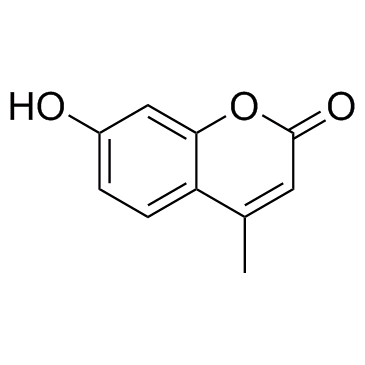
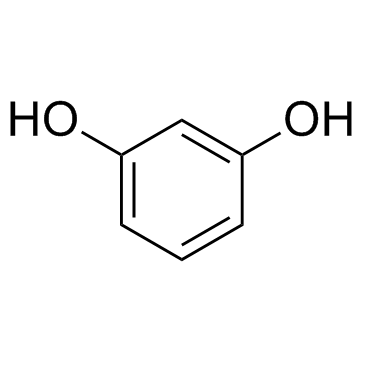 CAS#:108-46-3
CAS#:108-46-3 CAS#:141-97-9
CAS#:141-97-9 CAS#:536-74-3
CAS#:536-74-3 CAS#:878672-65-2
CAS#:878672-65-2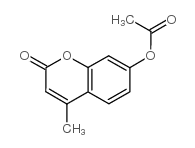 CAS#:2747-05-9
CAS#:2747-05-9 CAS#:105-45-3
CAS#:105-45-3 CAS#:3993-57-5
CAS#:3993-57-5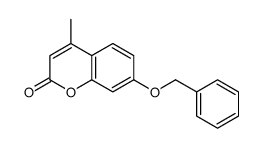 CAS#:24416-78-2
CAS#:24416-78-2 CAS#:5394-63-8
CAS#:5394-63-8 CAS#:10549-62-9
CAS#:10549-62-9![4-methyl-[1]benzofuro[3,2-g]chromen-2-one structure](https://image.chemsrc.com/caspic/460/105290-13-9.png) CAS#:105290-13-9
CAS#:105290-13-9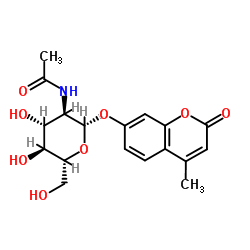 CAS#:37067-30-4
CAS#:37067-30-4 CAS#:3392-97-0
CAS#:3392-97-0 CAS#:38597-12-5
CAS#:38597-12-5 CAS#:36476-29-6
CAS#:36476-29-6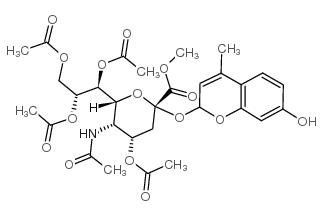 CAS#:59361-08-9
CAS#:59361-08-9 CAS#:73960-72-2
CAS#:73960-72-2 CAS#:387-46-2
CAS#:387-46-2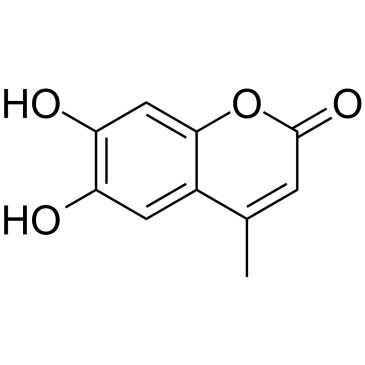 CAS#:529-84-0
CAS#:529-84-0
